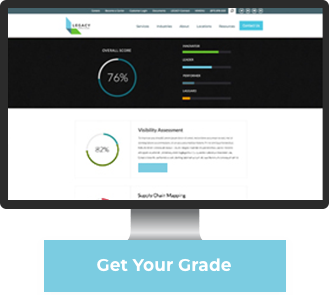11 Ways To Reduce Chargebacks in Your Supply Chain

Most companies know how common, and more importantly, how costly retail chargebacks can be. Chargebacks can be assessed for a number of reasons such as incorrect package labeling, incomplete order data transmission, improperly attached hang tags, and the list goes on.
For large shippers, the sheer volume of chargebacks can chip away at bottom line performance. For smaller or startup companies- chargebacks and compliance failures often results in lost sales and missed opportunity to get a foot in the door with major big box retailers.
While it may be impossible to eliminate chargebacks completely, there are steps every company can take to drastically reduce the amount they pay out every year in chargeback fees. Below we outline 10 important steps for reducing and avoiding chargebacks.
1. Clarify requirements from the start
Because business requirements and practices vary from company to company, it is important to establish clear expectations with the retailer from the start in order to ensure all parties are in agreement and reading from the same playbook. Requirements should be discussed and laid out in detail so that the relationship has a strong foundation from which to work from and surprise chargeback fees are minimized, or even better, abolished all together.
2. Know the numbers
Since avoiding chargebacks 100% of the time is an unlikely prospect, it helps to understand what current chargebacks are costing the bottom line and how much those can be reduced, by investing in the right systems, people or processes. Work with accounting to gather past year’s figures and then analyze those numbers to determine when, where and why chargebacks are most likely to occur. Is there seasonality involved? Are new product introductions problematic? Are there trends with certain employees or shifts? By analyzing past data and determining where and why past chargebacks occurred, it will be easier to set a plan going forward to reconcile these costly problem areas. Having concrete numbers will also help to prove why investment in certain systems or processes is necessary for reducing chargebacks.
3. Make the investment
In order to reduce chargebacks it is important that employees and key members of the leadership team are invested. Investment in the right technology systems (as discussed below), and the right mix of in house staff and outsourced service providers to monitor and manage the chargeback process is important to a successful strategy. It also tells employees that this initiative is important and reducing chargebacks matter.
4. A strong 3PL adds value by increasing compliance
A 3PL can be a company’s strongest ally in combating chargebacks. When choosing a 3PL, or when consolidating from multiple 3PLs to one, be sure to verify they have a strong track record of compliance and chargeback mitigation. This is important, especially for smaller companies who may not feel as comfortable challenging retailers on chargebacks. A 3PL handling everything from international shipping, private or contract warehousing, transportation and compliance is in a strong position to ensure documentation and compliance consistency within your organization. For those in the process of looking for a 3PL, our post What to Look for In Third-Party Logistics Service Providers can provide helpful insight and advice.
5. Use a WMS system
A strong WMS system, ideally a Tier 1 WMS, is critical to stay in line with vendor compliance requirements and eliminate human error. Connecting to trading partners to ensure timely, accurate and complete order and shipping data is a must. Integrating WMS with ERP and other order fulfillment platforms, and synchronizing automated data transmissions with streamlined handling processes will drive chargebacks out of your operation. To learn more about WMS systems, read our post, Is your Warehouse Management System Breaking Your Bottom Line?
6. Invest in EDI
EDI (electronic data interchange) facilitates visibility to purchase order, inventory and shipping data – it is the heartbeat of the retail supply chain. It is essential that EDI technology is kept in compliance to eliminate incorrect ASNs (advance shipping notices), which are the second largest source of retail chargebacks.
7. Create a compliance role
A strong 3PL should be an expert in compliance management and should be trusted to handle all compliance and regulatory issues. If there is no 3PL involved or there are multiple 3PLs, create a full-time or part-time role for overseeing and managing compliance. This will increase the likelihood of a positive relationship between the retailer and the company, cut down on repeated violations and eliminate blame if a chargeback should occur.
8. Document, Document, Document
Documentation is key to being able to successfully refute chargebacks. Create a documentation procedure and make it a priority to be diligent and detailed when documenting shipments. Make it someone’s job (see #7) to monitor documentation and ensure procedures are being followed and nothing is slipping through the cracks. Without documentation retailers are likely to reject challenges to chargeback claims. In order to help with documentation companies should evaluate transaction flow between parties in the supply chain. Improving optimization in the ordering and handling process will cut down on errors and make for easier documentation. For more tips on how to optimize your supply chain read our post, Supply Chain Optimization: How to Alleviate Common Pain Points.
9. Periodically review technology requirements
Periodically review these eight common technology-linked requirements to ensure there haven’t been any changes and standards are consistently being met:
- Ensure SKUs in your system correspond with those in the retailer’s system
- Check the character length of store/unit codes on labels
- Ensure quiet zone margins on barcode labels are the correct specifications.
- Make sure barcodes on labels are fully scannable and are not getting cut-off
- Check to see that load authorization or routing confirmation numbers on Bills of Lading and in the ASN are the correct format and character length
- Check special notes or ancillary information required on Bills Of Landing
- Confirm you have the correct format and character length of carrier SCAC and PRO numbers. Check required data elements on the packing lists.
- Ensure label printing hardware is maintained to avoid label scanning issues at receipt by the retailer.
10. Build relationships
While building genuine, personal relationships can take time, the effort will pay dividends. Take the time to get to know the retailer’s vendor compliance team or key contacts. Be collaborative and take a vested interest in their success. This can be done by hosting monthly or quarterly check in meetings with the team, participating in gainsharing, administering workshops, visiting the retailer’s DC to get a first-hand understanding of the receiving process, and making it a priority to communicate regularly with the compliance team to ensure changes in procedures or policy are not missed.
11. Engrain compliance into your culture
One of the biggest benefits of a strong company culture is a low employee turnover and an engaged employee base. But culture doesn’t happen overnight- it has to be measured, defined and developed. Making retailer compliance part of your culture is highly recommended, in a related post we talk about how to build an environment where employees are encouraged to improve warehouse efficiencies.
Overall, investing in the right systems, keeping thorough documentation, working with a strong 3PL to ensure compliancy and consistency, and building the right culture will help drive out chargebacks.
LEGACY Supply Chain Services is a top-ranked 3PL serving major North American retailers – and recent winner of Sam’s Club’s 3PL Partner of the Year. Contact us to learn more.
Get Insights. Stay Ahead.
Get the latest news and insights via email on warehouse improvement, transportation optimization, labor strikes and international shipping rate changes.Popular Posts
Search Posts
-
2024 Q1 Freight Landscape: Trends, Challenges, and Predictions
As the first quarter of 2024 comes to an end, here are some observations over the past few months as well as predictions about the trucking...
+ Read more -
Baltimore Bridge Impact Assessment – Update
Following the recent Baltimore Bridge collapse and subsequent port closures, we want to keep our customers informed about the situation and...
+ Read more -
Global Momentum Builds for Charge on Global Shipping Sector’s CO2 Emissions
A growing coalition of 47 countries, including key players like the European Union, Canada, Japan, and various Pacific Island nations, is...
+ Read more










